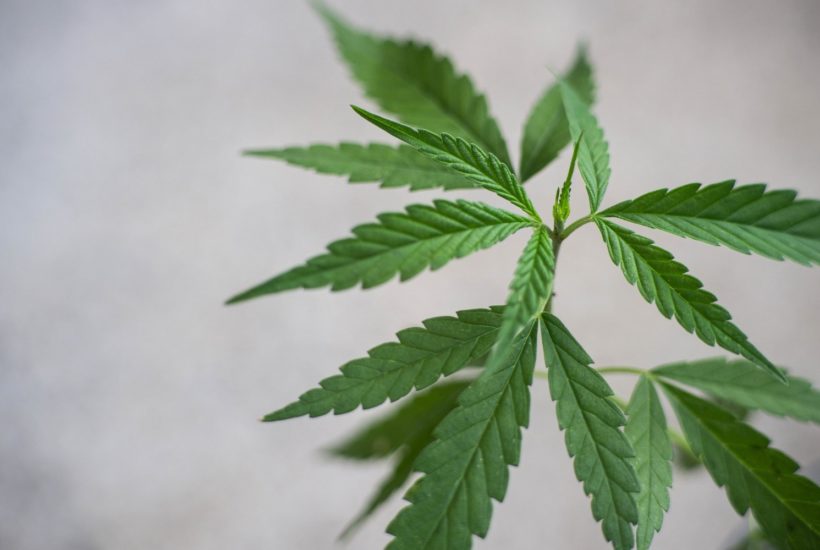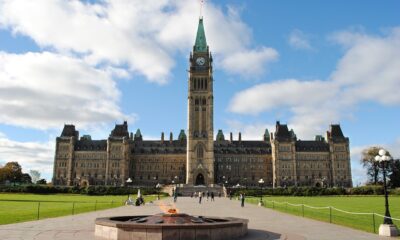Cannabis
Why did Canada’s cannabis bubble burst?
Canada is the second country after Uruguay to legalize possession and use of recreational cannabis. Canadian provinces and municipalities had been preparing for months for the end of cannabis prohibition. They are responsible for setting out where cannabis can be bought and consumed. However, legalization of recreational cannabis use in Canada did not result in increased demand for the product.

When Canada legalized cannabis a little over a year ago, many economic players were rubbing their hands together thinking they were getting a slice of the pie in what appeared to be a great business. The media dubbed this frenzy “green rush”, in reference to the color of cannabis.
Investors of all kinds seemed to want to take advantage of the legalization of recreational cannabis in order to make flourishing business. Even Snoop Dogg and the former chief of the Toronto police force were clamoring for a piece of this multi-billion dollar pie.
The latest CBD & Cannabis updates are now at your fingertips, with notifications and fresh information offered by our companion CBD News App.
Rollercoaster results and tight profit margins
With decades of experience in energy commodity markets, Jonathan Rubin, CEO of New Leaf Data Services, saw the cannabis legalization in states such as Colorado and California in the United States (and later in Canada) as a unique opportunity to embark on the commercialization of a brand new product. This meant that, like the price of wheat or pork, the wholesale price of cannabis would fluctuate with the market. So, instead of investing in cannabis itself, Mr. Rubin launched “New Leaf” to track changes in the price of cannabis in states where it was legal.
Investors and other industry members pay for access to this real-time market price analysis service. This business model has given Mr. Rubin an interesting perspective on the evolution of the cannabis market. For him, the deployment was disappointing in Canada. “Investors did not experience the sales and earnings growth they had envisioned,” he said. “I don’t want to say it’s a failure, but there’s certainly frustration.”
Wholesale prices have dropped about 17% since New Leaf began tracking the data, maintaining tight profit margins for producers. Sales have also slowed, according to Statistics Canada. This has led to a rollercoaster effect on the stock prices of publicly-traded cannabis companies. In May 2018, the Canadian grower Canopy Growth made headlines when the company became the first cannabis company to join the New York Stock Exchange.
Six months later, the share price had almost doubled with a peak of $52.03 per share. Currently, the share price has returned to its previous level and competitors have suffered equally large losses.
Supply initially lower than demand, then trend reversed
When cannabis became legal on October 17, 2018, there was insufficient supply to meet Canadian demand. Long line-ups and backlogs of online orders deterred consumers. Growers did not know about popular varieties, and distribution problems needed to be resolved. “We have tried to figure out which varieties we should grow, in what formats and in what quantities. We have done an excellent job, but we have not succeeded,” said Canopy’s president Rade Kovacevic.
A patchwork of provincial legislation has also made it more difficult to get products to consumers. While it is easy to buy cannabis in some places, in others, stores are scarce. This is particularly true in Ontario, Canada’s most populous province. Red tape and the capping of the number of cannabis outlets have slowed the start-up. Retail licenses were awarded by lottery, and the province maintained the number of retail licenses at 24 for a population of 14.5 million.
After a period in which demand was stronger than supply, the trend was reversed. Where there used to be a shortage, producers now have too much product, partly due to a lack of retail sales. In September, Canadians purchased 11,707 kilos of dried cannabis flowers in Canada. Growers had a total of about 165,000 kilos of finished and unfinished products ready for sale, more than enough to meet the demand for a whole year.
Kovacevic attributed much of his company’s woes to the lack of retail sales in Ontario. “I think the lack of continuity of outlets across the country has slowed the transition from the black market to the legal market,” he said. “It was a challenge.”
75% of cannabis users continue to use it illegally
Indeed, when the government announced its decision to legalize cannabis, one of its main desires was to reduce the black market. This currently looks like a failure, since the Canadian Institute of Statistics estimates that about 75% of cannabis users continue to use illegal cannabis.
“There’s a very strong resistance to legal stores in the sense that: it’s more expensive and there’s not enough of them. “They’re not close to the consumers, so they just deal with the local guy like they always have,” said Robin Ellis, co-founder of Toronto retailer The Friendly Stranger and a long-time campaigner for cannabis legalization.
There were only five retail stores open in Toronto (population of about three million) in 2019 and they were all concentrated in the downtown core, which meant that many people had to travel a long way to buy legal cannabis.
No explosion in demand
Perhaps one of the reasons why sales have been poor for growers is that, contrary to the fears of some health experts, the legalization of marijuana has not created an exponential demand. In 2019, the percentage of Canadians who used cannabis increased from 14% to about 17%.
Consumption accelerated in the group of older persons who preferred to purchase legal cannabis. While use among adolescents decreased or remained the same.
__
(Featured image by BiW99 via Pixabay)
DISCLAIMER: This article was written by a third party contributor and does not reflect the opinion of Born2Invest, its management, staff or its associates. Please review our disclaimer for more information.
This article may include forward-looking statements. These forward-looking statements generally are identified by the words “believe,” “project,” “estimate,” “become,” “plan,” “will,” and similar expressions. These forward-looking statements involve known and unknown risks as well as uncertainties, including those discussed in the following cautionary statements and elsewhere in this article and on this site. Although the Company may believe that its expectations are based on reasonable assumptions, the actual results that the Company may achieve may differ materially from any forward-looking statements, which reflect the opinions of the management of the Company only as of the date hereof. Additionally, please make sure to read these important disclosures.
First published in rtbf.be, a third-party contributor translated and adapted the article from the original. In case of discrepancy, the original will prevail.
Although we made reasonable efforts to provide accurate translations, some parts may be incorrect. Born2Invest assumes no responsibility for errors, omissions or ambiguities in the translations provided on this website. Any person or entity relying on translated content does so at their own risk. Born2Invest is not responsible for losses caused by such reliance on the accuracy or reliability of translated information. If you wish to report an error or inaccuracy in the translation, we encourage you to contact us.

-

 Biotech1 week ago
Biotech1 week agoBiotech Booster: €196.4M Fund to Accelerate Dutch Innovation
-

 Markets2 weeks ago
Markets2 weeks agoCoffee Prices Decline Amid Rising Supply and Mixed Harvest Outlooks
-

 Crypto4 days ago
Crypto4 days agoBitcoin Traders Bet on $140,000: Massive Bets until September
-

 Crypto2 weeks ago
Crypto2 weeks agoCaution Prevails as Bitcoin Nears All-Time High

























